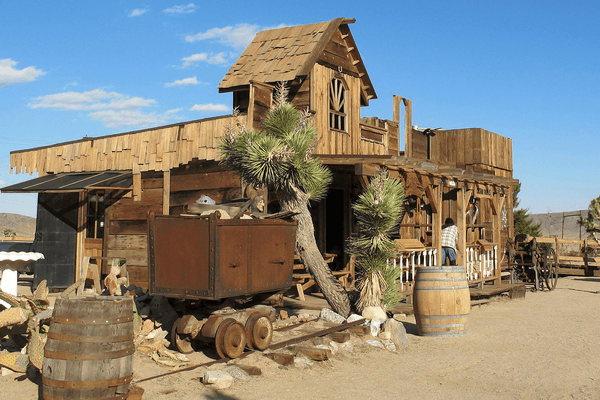SELECTING A
DOUBLE MALT BOURBON
Many legal requirements must be met for a whiskey to be called bourbon. Most distillers stop at the whiskey and distribute their product on a mass level. Other distillers look to add unique twists and develop their complex expressions, creating something that's still a bourbon but a much more involved or nuanced experience. But how is a term like double malt bourbon different than the name double malt Scotch...

Why Use Malted Grains
You may have heard the term malt or "double malt bourbon" in some capacity, but perhaps the meaning is unclear. What is malting? What are malted grains? Malting is a process in which grain is germinated or sprouted to a certain point before being added to the bourbon mash bill. Once the grain has sprouted appropriately, the grain is very carefully and methodically dried.
The sprouting process is detailed and strictly controlled to stop the malting process once it's the distiller's preference for that mash bill. Too much or too little drying can have negative consequences on the flavor of the final double malt bourbon.
Now that you understand what malting is, you may be asking why a distiller would use a malted grain (or two malted grains as in the case of a double malt bourbon)? Malting grains serves a very specific purpose and will have a dramatic effect on the final whiskey profile. For the grains' starch to be converted into sugar that will be fermented into alcohol, the starches need to be broken down by enzymes. The malting process develops the enzymes required (α-amylase, β-amylase). The enzymes break the starches into disaccharide maltose, monosaccharide glucose, higher-developed sugars called maltodextrins, and trisaccharide maltotriose.
In addition to the enzymes mentioned above, they develop other enzymes called proteases. Proteases break down the complex proteins found in the grains into simpler structured proteins that the yeast can more easily ingest during fermentation. As mentioned, the malting process is halted at a certain point to set the proper starch-to-enzyme ratio, with the partially converted starches becoming sugars that can be fermented. Ethanol, the alcohol we consume, is a by-product of the fermentation process.
In addition, some malted grains consist of smaller amounts of different sugars, such as fructose and sucrose. These are not the results of breaking down the starches; instead, they're already naturally present within the grain. Due to these other sugars' presence, additional fermentable sugars are available to be converted during the mashing process. These additional sugars add a certain depth and complexity to the final product that would be missing in a non-malted grain mash bill. They are further pronounced in a double malt bourbon mash bill.
You may wonder if corn is ever malted. Distillers have experimented with malted corn, but it hasn't taken hold and is not very common. Usually, the corn is crushed or cracked, breaking up the hard shell so that the corn is opened, so the natural sugars in the corn are available for the fermentation process. The “grind” closely resembles corn meal. Other grains may or may not be malted, depending on the objectives of the distiller. In a double malt bourbon, at least two grains are malted.
What Exactly Does “Double Malt Bourbon” Mean?
Most likely, if you have heard the term malt, it is probably in reference to Scotch whisky in the form of the phrase ‘Single Malt.' That means that the whisky comes from a single distillery using barley as the primary, or only, malted grain. Scotland has legal requirements for single malt, much like the U.S. has for bourbon. Double malt has also been used colloquially in the Scotch industry, as well, to refer to a blend from exactly two distilleries. In the world of Scotch, “malt” means origin, as in the place the particular scotch was distilled. As a note, it does not need to be aged in that location. So, a single malt scotch means it was made by one distiller at one location. A double malt scotch is a blend of scotch from two distilleries.
When referring to bourbons, however, double malt has nothing to do with its origin, aging duration, process, or how many distilleries the distillate originated from. On the contrary, double malt refers to the number of malted grains used in the mash bill. In addition to the required corn, a double malt bourbon will have two additional malted grains in the mash bill. For example, a mash bill could consist of 70% corn, 20% malted wheat, and 10% malted barley. While it has three grains in the bill, only two are malted, hence the term double malt.
There is nothing straightforward about producing a double malt bourbon. It is much more complex than simply figuring out the percentage of each grain and adding each grain to the mash bill. Malting is a very particular process that must be done carefully and precisely every time to produce the proper result. In addition, there is a great detail of precision involved in introducing the corn to the mash bill, right down to the size of the kernels. It is an art form to bring them all together at precisely the right time in the correct order.
Selecting A Bourbon
As part of Rabbit Hole Distillery’s lineup of premium bourbons and rye, Heigold High Rye Double Malt Bourbon is an award winning and beloved bourbon expression by many.
Heigold is a Kentucky Straight Bourbon Whiskey made with a high percentage of rye. It lures you in with a beautiful aroma of toasted malt and warm baking spices. On the pallet, Heigold opens with silky butterscotch and hints of bright citrus finishing with a thrilling crescendo of pepper spice. While great neat or on the rocks, a high proof of 95 allows Heigold’s bold flavors to shine in any cocktail.
The uniqueness of this Bourbon starts with mash consisting of corn, malted German rye, and malted barley. Once distilled, we proof the new make down to 110 before barreling. This produces a rich, decadent bourbon void of harsh flavors or burn. We mature the distillate for 3 years in toasted and charred American White Oak barrels crafted by Kelvin Cooperage. The process of toasting before charring is a modern approach to barrel making, allowing deeper whiskey absorption into the barrel which gives this bourbon its deep flavor and caramel color.






